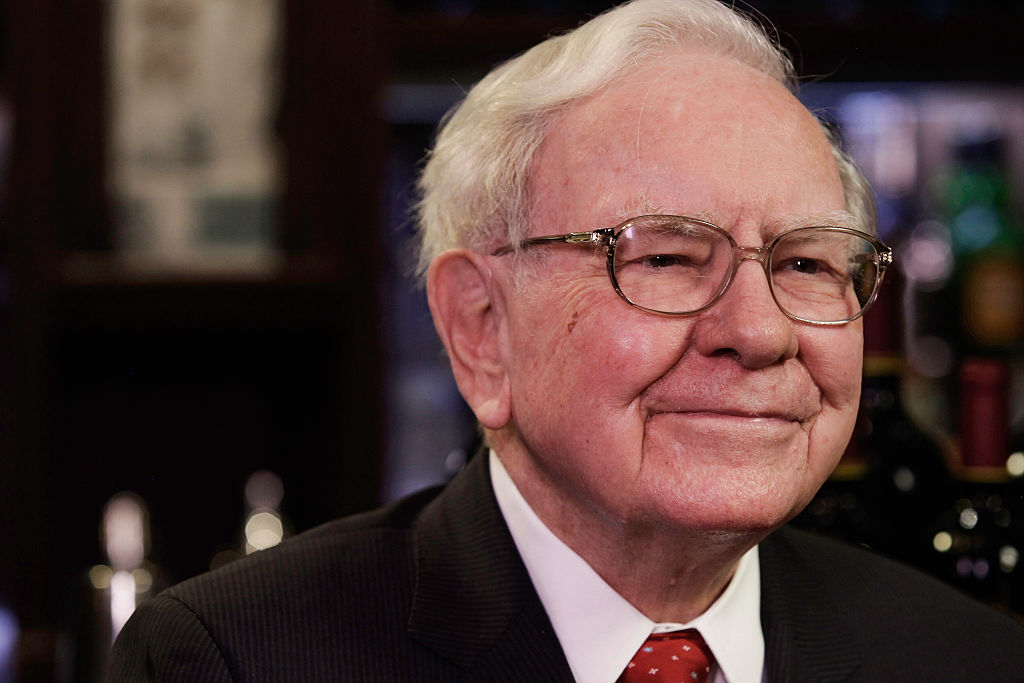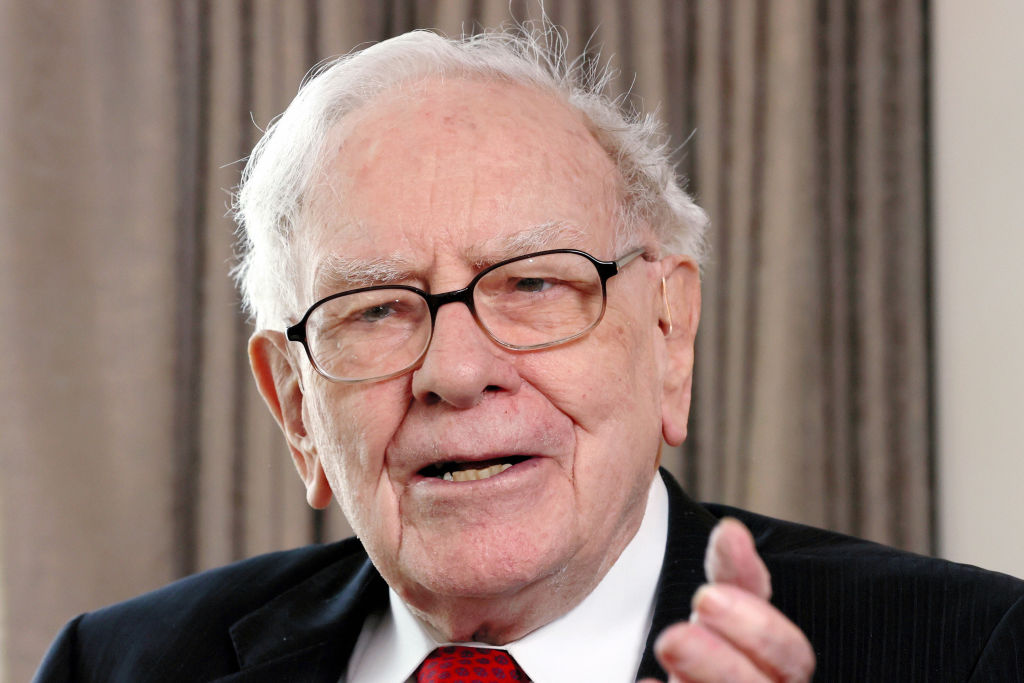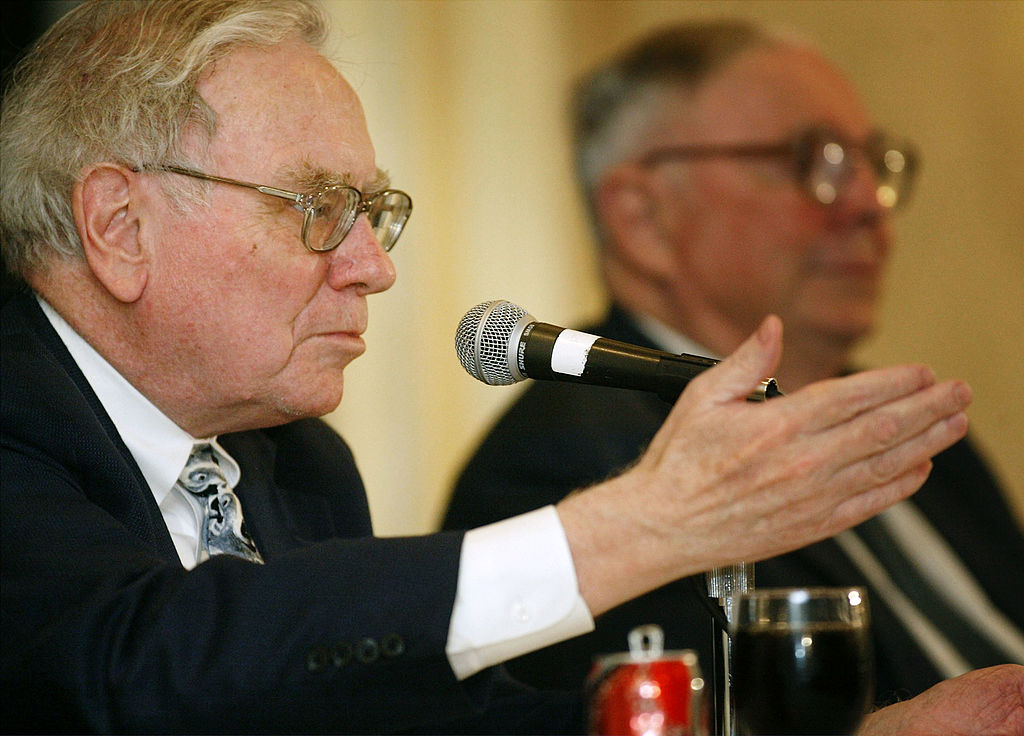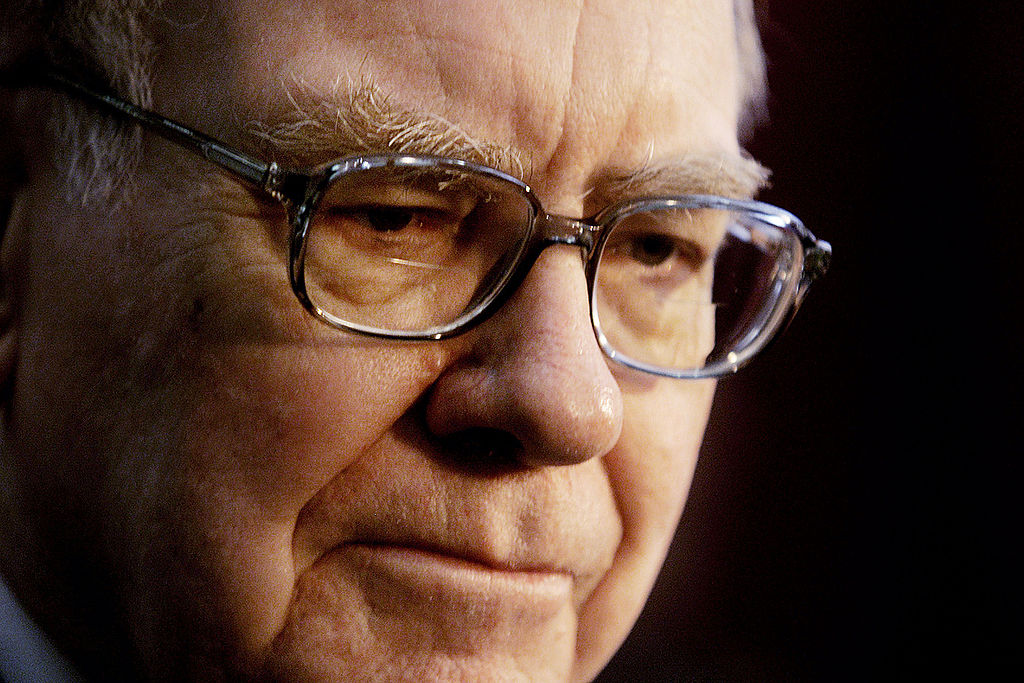10 Expensive Stocks to Steer Clear Of
Expensive stocks with mediocre growth prospects can drop the most when the whole market starts to slide. These 10 stocks could be at high risk.


As folksy investing icon Warren Buffett once quipped, "Whether we're talking about socks or stocks, I like buying quality merchandise when it is marked down." And as many investors have learned over the years, there's a lot to be said for swooping in to make a long-term investment in a company that has fallen on some short-term bad luck.
The flip side of that philosophy, however, is that investors should also be concerned with avoiding mediocre merchandise that might be overpriced. And while there is always a select group of expensive stocks that can be bought high and sold even higher, investors shouldn't be so naïve as to assume every stock that has had a decent run is destined for continued success.
Many expensive stocks aren't necessarily bad companies. They might not even see difficult times ahead. In many cases, they have simply enjoyed rapid share appreciation in the past few months or years, but suddenly face slowing momentum now that the gains seem to be fully realized.
Here are 10 expensive stocks that investors may want to steer clear of in late 2021. Specifically, these are companies with modest growth estimates but elevated valuation metrics, such as a forward price-to-earnings (P/E) ratio ahead of their peers.
As always, investors should do their own research and only buy the stocks that fit with their personal investing goals.
Data is as of Sept. 21. Forward price-to-earnings ratio, price/earnings-to-growth ratio and analysts' average long-term growth rate expectations – which represent the estimated average rate of earnings growth for the next three to five years – are courtesy of S&P Global Market Intelligence. Dividend yields are calculated by annualizing the most recent payout and dividing by the share price.

American Water Works
- Market value: $32.4 billion
- Forward price-to-earnings (P/E) ratio: 42.1x
- Price/earnings-to-growth (PEG) ratio: 5.1x
- Analysts' average long-term (LT) earnings growth rate: 8.2%
- Dividend yield: 1.4%
Often positioned as one of the "sure thing" stocks on Wall Street, utility American Water Works (AWK, $178.46) has grabbed a lot of attention in the last year or so amid concerns about severe drought conditions in many parts of the Western U.S. However, while the roughly $32-billion company has seen a big run of nearly 40% from its March 2021 lows, it's worth asking the question of whether current investors are overpaying for this stock.
After all, analysts, on average, are only forecasting 7% revenue growth this fiscal year and 6% next year – not exactly jaw dropping numbers.
Part of this is because while American Water Works is a public utility, it is also highly regulated and relies on partnerships with some 1,700 communities in 16 different states. With a diverse group of stakeholders and local requirements, it just isn't possible for this water utility to ratchet up prices dramatically even if it wanted to. Furthermore, water and wastewater infrastructure is expensive to build and maintain, so it's not like AWK is a tech stock that scales easily.
That's what makes the current valuation metrics a bit of a head scratcher. With a forward price-to-earnings ratio of more than 42 and a price/earnings-to-growth (PEG) of more than 5, this theoretically sleepy utility is priced like some small-cap Silicon Valley software companies.
And while some major utility stocks offer dividends north of 3% or 4%, AWK is very lackluster on the income front with 1.4% in annual yield based on current payouts.
None of this is to say AWK is doomed. But new investors should strongly consider the reality of fundamentals before they pay a premium for expensive stocks and get disappointed by future performance.

Cable One
- Market value: $11.6 billion
- Forward P/E ratio: 35.9x
- PEG ratio: 9.0x
- Analysts' average LT earnings growth rate: 4.0%
- Dividend yield: 0.6%
Cable One (CABO, $1,915.71) is a mid-sized telecom player that offers voice, data and video connectivity to nearly 1 million residential and commercial customers under services including its Sparklight and Clearwave brands.
With an $11 billion market capitalization and nearly 3,000 employees, CABO is certainly no pint-sized player. And with a forecast for 20% revenue growth in 2021, this is hardly a company that is fading away.
However, it's undeniable that this stock is well behind entrenched players like Comcast (CMCSA) and Verizon Communications (VZ). And there are persistent concerns about competition that investors must acknowledge – as well as the general notion that Cable One is way out of whack with CMCSA and VZ from a valuation perspective.
Consider CABO trades for a forward P/E ratio of nearly 36 and nine times its earnings-to-growth, while Big Telecom mainstay Comcast has a forward P/E of 16 and a PEG ratio of 1.2x. The comparison isn't exactly apples to apples given differences in scale, but it's far enough out of alignment that investors may want to raise an eyebrow when sizing up exp.
And while Cable One shares are down about 10% from their recent high above $2,100 in August, there's plenty of reason to wonder if this stock may still be a bit too overpriced to be worth new money right now.

Consolidated Communications
- Market value: $866.0 million
- Forward P/E ratio: 45.4x
- PEG ratio: 22.7x
- Analysts' average LT earnings growth rate: 2.0%
- Dividend yield: N/A
Consolidated Communications (CNSL, $8.77) is a prime example of the kind of stock that seemed like a great idea in the early days of the pandemic but looks increasingly risky now that we are more than a year-and-a-half removed from the worst of the disruptions.
In a nutshell, CNSL is a small telecom provider that offers business and residential services, including high-speed internet access and high-definition and streaming TV capabilities, as well as related fiber, cable and wireless infrastructure.
As schools moved to remote learning and employees began semi-permanent telecommuting arrangements in 2020, Consolidated Communications saw a huge resurgence in its business.
However, it's very important to acknowledge that, despite its recent run higher, this stock is caught in a long-term downtrend. Specifically, shares plummeted from nearly $30 in late 2016 to the low-$3 range in 2019. To add insult to injury, CNSL cancelled its dividends entirely two years ago.
Now, shares are back up to $9 or so. But as with a number of expensive stocks that have caught a short-term bid, CNSL could be fighting a losing battle for long-term relevance considering the dividend remains a thing of the past and its aging infrastructure is coupled with very real competition from larger and better-financed firms. There's perhaps no clearer illustration of this than the fact that revenue is forecast to decline in both this fiscal year and next.
Maybe Consolidated Communications can tough it out, but investors need to take a hard look at the underlying business here instead of just banking on continued tailwinds.

Fastenal
- Market value: $30.3 billion
- Forward P/E ratio: 32.1x
- PEG ratio: 4.0x
- Analysts' average LT earnings growth rate: 8.1%
- Dividend yield: 2.1%
Valued at $30 billion, industrial stock Fastenal (FAST, $52.67) provides specialty fasteners and other construction supplies, including the rather mundane fare of nuts, bolts, screws, framing systems and gear for electrical and plumbing work. As you can imagine, there is a strong baseline demand for these kinds of goods – and as one of the largest suppliers in the space, FAST has deep relationships and a very stable business model.
The challenge for investors in late 2021 is the stock is priced akin to a dynamic growth name despite fundamentals that are decidedly low-key. For instance, both its fiscal 2021 earnings per share (EPS) and revenue are expected to grow by under 5% this year. And with a forward price-to-earnings ratio of about 32 and a price-to-sales ratio of more than 5, Fastenal has clearly earned a spot among expensive stocks. For the sake of comparison, similar specialty industrial supplier W.W. Grainger (GWW) has a forward P/E of about 18 and a price/sales ratio of less than 2!
Fastenal has been kind to investors over recent years, with gains of more than 150% from 2017 through the present day, compared with a rouhly 80% return for the S&P 500 in the same period. And it pays a reliable 2.1% dividend to boot.
However, it's also priced like a much more dynamic company that has significant growth potential in both the top and bottom line. The reality is that's just not Fastenal's business – and if and when the stock market hits a rough patch, things could get decidedly worse for this name.
Case in point: As the market has cooled off in the last month or so, FAST shares have tumbled more than 7% from their 52-week high to significantly underperform both its peers and the rest of Wall Street as a whole.

General Electric
- Market value: $106.3 billion
- Forward P/E ratio: 32.9x
- PEG ratio: 8.2x
- Analysts' average LT earnings growth rate: 4.0%
- Dividend yield: 0.3%
It's hard to imagine that a brand like General Electric (GE, $96.82) will disappear anytime soon, given its more than $100-billion valuation and 140-year history of corporate successes. However, it's undeniable that in recent years GE has proven to be far less dominant than in prior decades.
Long-term investors will remember the travails of GE during the 2008 financial crisis, when shares plunged more than 80%. The intervening years weren't exactly kind, either. These were characterized by numerous dividend cuts and careless oversight from one-time darling CEO Jack Welch that led to a bloated and disjointed company governed by short-termism and allegations of shady accounting practices.
Overhang from these structural problems are the biggest reason GE stock has continued to suffer more than a decade from the financial crisis, including a nearly 60% decline over the last five years.
Optimists believe that General Electric may have finally turned a corner, with shares roughly doubling from their 52-week low in late 2020. However, after peaking above $100 a share in May, the stock has struggled to make further headway.
Part of this could be that revenue is forecast to contract in fiscal 2021, even though EPS are set to rebound significantly from the low COVID-induced level from last year.
Furthermore, continued uncertainty in its aviation and defense business lines remains, and in its recent second-quarter earnings call, the company warned it is facing pressures in the third and fourth quarters and a "challenging" environment through the first half of 2022 thanks to supply chain disruptions and price inflation.
General Electric continues to make headway with its long-term restructuring plans, including the recent sale of its steam power business. However, with uncertainty around its core business lines, it's hard to trust GE after this big run and the risk of continued disruptions in the coming quarters.

ICU Medical
- Market value: $5.1 billion
- Forward P/E ratio: 46.2x
- PEG ratio: 4.6x
- Analysts' average LT earnings growth rate: 10.0%
- Dividend yield: N/A
On the surface, ICU Medical (ICUI, $239.52) sounds like the perfect pandemic-era play. But as with many other expensive stocks, investors who are looking at the recent performance of this one may not be getting the whole story, and may risk buying an overpriced company before it hits a rough spot.
ICUI is not a particularly dynamic healthcare stock, with a market value of about $5 billion and a business that focuses mainly on mundane "infusion therapy" devices, including catheters, irrigation supplies and disinfecting caps. That's not a knock against ICU Medical, as these healthcare staples are very important to hospitals and have strong baseline demand. That said, it's not like innovations are possible – or that some disruptive trend will result in a 100% increase in sales of IV bags overnight.
Nevertheless, there's been plenty of enthusiasm toward ICUI's underlying business on Wall Street lately. That's primarily because ICU Medical in September announced the $2.35-billion acquisition of some Smiths Group (SMGZY) medical operations, including syringes and other overlapping vascular products.
There are clearly synergies here, but the instant 26% gain for ICUI stock in the immediate aftermath of the announcement could be just a bit too far, too fast. It's also worth noting a ICUI paid roughly $400 million more for the Smiths Group operations than a previous bid from private equity firm TA Associates.
This is not to say it is a bad deal or that ICU Medical will fall apart. However, the stock now trades at a hefty premium over next year's projected earnings and there's not much margin for error. The acquisition was great for investors who bought the stock a few weeks ago, but those looking to take a new stake may want to exercise caution.

Las Vegas Sands
- Market value: $27.2 billion
- Forward P/E ratio: 60.6x
- PEG ratio: 12.1x
- Analysts' average LT earnings growth rate: 5.0%
- Dividend yield: N/A
The pandemic was unkind to many consumer-oriented stocks that relied on physical transactions. Casino giant Las Vegas Sands (LVS, $35.59) has definitely been part of that group.
However, unlike some companies, LVS hasn't managed to stage much of a lasting comeback. Shares remain below $40, down from a January 2020 high of about $74 – but more importantly, well below its more recent highs of about $66 per share earlier this year.
The stock got a lift recently on news that the Asia gambling hub Macau, where LVS has very important operations, has eased restrictions for visitors from mainland China. But this was short-lived amid concerns over rising Delta variant cases and the possibility of increasing regulatory restrictions in Macau.
The news cycle alone is creating plenty of risks for Las Vegas Sands, but there are structural challenges, too. Wall Street is projecting yet another operating loss this year despite forecasts for a more than 50% rebound in revenue. More importantly, fiscal 2022 revenue projections of just under $10 billion remain significantly below the $13.7 billion in sales recorded in 2019.
Some traders are banking on the short-term rebound potential of this stock, but that's a risky proposition. That's particularly true when you consider the steep declines from 2021 highs on similar hopes.

LivaNova
- Market value: $4.3 billion
- Forward P/E ratio: 36.9x
- PEG ratio: 4.0x
- Analysts' average LT earnings growth rate: 9.3%
- Dividend yield: N/A
London-based medical device firm LivaNova (LIVN, $81.33) has had a heck of a run in the last year, rising more than 85% over the last 12 months thanks to a recovery in its cardiovascular and neuromodulation businesses. During the early innings of the pandemic, procedures like heart valve replacements or epilepsy treatments were curtailed, but these healthcare services have finally started to come back.
However, it's worth asking if this impressive rebound is sustainable and whether the optimism is now fully priced into the shares for the near term.
When you look forward, LivaNova revenues are set to rise by less than 10% this fiscal year and drop to a low single-digit growth rate in fiscal 2022. Profits are admittedly set to snap back at a much higher rate, but even so, this medical device stock boasts a forward price-to-earnings ratio of about 37 at present. That doesn't leave a lot of room for error.
Plus, while certain regions of the world are looking better, it remains to be seen whether COVID-19 restrictions will return in earnest this fall or winter. There is a chance LIVN sidesteps any resurgence in coronavirus infections, and management is confident in its longer-term plan for growth. But when it comes to expensive stocks, there are a lot of question marks for this one right now. After its big run recently, investors may want to tread lightly before adding to their positions.

Paychex
- Market value: $39.1 billion
- Forward P/E ratio: 32.1x
- PEG ratio: 4.6x
- Analysts' average LT earnings growth rate: 6.9%
- Dividend yield: 2.4%
Business service firm Paychex (PAYX, $108.50) offers human resources (HR), payroll and benefits services to small and medium-sized enterprises in the U.S. and Europe. For many small business owners, monitoring timecards or figuring out an insurance plan simply isn't their top priority – and for a fee, PAYX will handle those tasks in their place.
The thing is, this kind of business is incredibly cyclical as it depends on an environment where more small businesses are growing and, therefore, requiring these services. While there was indeed a rebound in small business spending earlier this year thanks to abatement in some of the more severe COVID-19 restrictions, the growth rate of Paychex isn't exactly blowing the doors off.
Consider revenue is expected to rise just 7% this fiscal year, and less than 6% in FY 2023. At the same time, earnings per share are forecast to expand by 12% and 7%, respectively. Sure, the company is growing, but do those kinds of numbers deserve a run of about 60% from $75 a share in September 2020 to a high of about $120 just last month?
Worse, the momentum may already be starting to roll over for PAYX, as shares have slumped about 8% since that August peak. And even after this modest decline, Paychex is still worthy of being included on this list of expensive stocks. It currently has a forward price-to-earnings ratio of about 32 and a PEG ratio of 4.6 – pointing to a lofty valuation. Plus, that's significantly higher than sector peer Automatic Data Processing (ADP) that boasts a forward P/E of only about 30 and a PEG ratio of 2.3.
Even if you're not concerned about general economic headwinds like inflation or a COVID-19 resurgence that could disrupt PAYX, recent trends seem to indicate the stock's run from its 2020 lows was perhaps a bit rushed. As such, new investors may want to think twice before buying in here.

Vonage Holdings
- Market value: $4.0 billion
- Forward P/E ratio: 86.7x
- PEG ratio: 17.3x
- Analysts' average LT earnings growth rate: 5.0%
- Dividend yield: N/A
You may remember Vonage Holdings (VG, $15.94) from its ahead-of-the-curve approach to VoIP, or voice over internet protocol. In the early 2000s, this company made a lot of headway disrupting legacy phone carriers by offering cheaper connectivity over the internet instead of via traditional voice landlines. VG has grown to boast roughly $1.4 billion in annual revenue as of the current fiscal year.
Of course, Vonage has achieved that growth in part thanks to an aggressive acquisition strategy over the past few years, which gave the company international exposure and allowed it to push into the enterprise marketplace. And thanks to its continued investment in growth, the company is only generating thin profits at present – with a mere 17 cents in earnings per share last fiscal year and a forecast of just 18 cents this time around.
Sure, revenue is set to grow by double digits both this fiscal year and next, but, as with so many things on Wall Street, it's more about expectations and valuation than anything else. Specifically, investors have bid up Vonage big-time from a low of around $5 a share in March 2020 to its current level above $16. This suggests optimism for future growth may already be priced in, and the pressure is on VG to deliver.
Similar to other expensive stocks on this list, Vonage does not have a lot of room for error. It already has a forward P/E of more than 86 and there is plenty of competition from other tech firms that offer cloud-based voice services to businesses. Given its lofty valuation, this could create bigger headwinds for VG if news starts to skew negative in late 2021.
Profit and prosper with the best of Kiplinger's advice on investing, taxes, retirement, personal finance and much more. Delivered daily. Enter your email in the box and click Sign Me Up.

Jeff Reeves writes about equity markets and exchange-traded funds for Kiplinger. A veteran journalist with extensive capital markets experience, Jeff has written about Wall Street and investing since 2008. His work has appeared in numerous respected finance outlets, including CNBC, the Fox Business Network, the Wall Street Journal digital network, USA Today and CNN Money.
-
 Nasdaq Sinks 418 Points as Tech Chills: Stock Market Today
Nasdaq Sinks 418 Points as Tech Chills: Stock Market TodayInvestors, traders and speculators are growing cooler to the AI revolution as winter approaches.
-
 23 Last-Minute Gifts That Still Arrive Before Christmas
23 Last-Minute Gifts That Still Arrive Before ChristmasScrambling to cross those last few names off your list? Here are 23 last-minute gifts that you can still get in time for Christmas.
-
 The Rule of Compounding: Why Time Is an Investor's Best Friend
The Rule of Compounding: Why Time Is an Investor's Best FriendDescribed as both a "miracle" and a "wonder," compound interest is simply a function of time.
-
 What Made Warren Buffett's Career So Remarkable
What Made Warren Buffett's Career So RemarkableWhat made the ‘Oracle of Omaha’ great, and who could be next as king or queen of investing?
-
 With Buffett Retiring, Should You Invest in a Berkshire Copycat?
With Buffett Retiring, Should You Invest in a Berkshire Copycat?Warren Buffett will step down at the end of this year. Should you explore one of a handful of Berkshire Hathaway clones or copycat funds?
-
 Stocks at New Highs as Shutdown Drags On: Stock Market Today
Stocks at New Highs as Shutdown Drags On: Stock Market TodayThe Nasdaq Composite, S&P 500 and Dow Jones Industrial Average all notched new record closes Thursday as tech stocks gained.
-
 Markets Are Quiet Ahead of Fed Day: Stock Market Today
Markets Are Quiet Ahead of Fed Day: Stock Market TodayInvestors, traders and speculators appear to be on hold amid an unusually fraught Fed meeting.
-
 9 Warren Buffett Quotes for Investors to Live By
9 Warren Buffett Quotes for Investors to Live ByWarren Buffett transformed Berkshire Hathaway from a struggling textile firm to a sprawling conglomerate and investment vehicle. Here's how he did it.
-
 DexCom, GE, SLB: Why Experts Rate These Stocks at Strong Buy
DexCom, GE, SLB: Why Experts Rate These Stocks at Strong BuyWall Street gives these three diverse names Strong Buy recommendations with high potential upside.
-
 A Timeline of Warren Buffett's Life and Berkshire Hathaway
A Timeline of Warren Buffett's Life and Berkshire HathawayBuffett was the face of Berkshire Hathaway for 60 years. Here's a timeline of how he built the sprawling holding company and its outperforming equity portfolio.
-
 Berkshire Buys the Dip on UnitedHealth Group Stock. Should You?
Berkshire Buys the Dip on UnitedHealth Group Stock. Should You?Buffett & Co. picked up UnitedHealth stock on the cheap, with the embattled blue chip one of the newest holdings in the Berkshire Hathaway equity portfolio.
